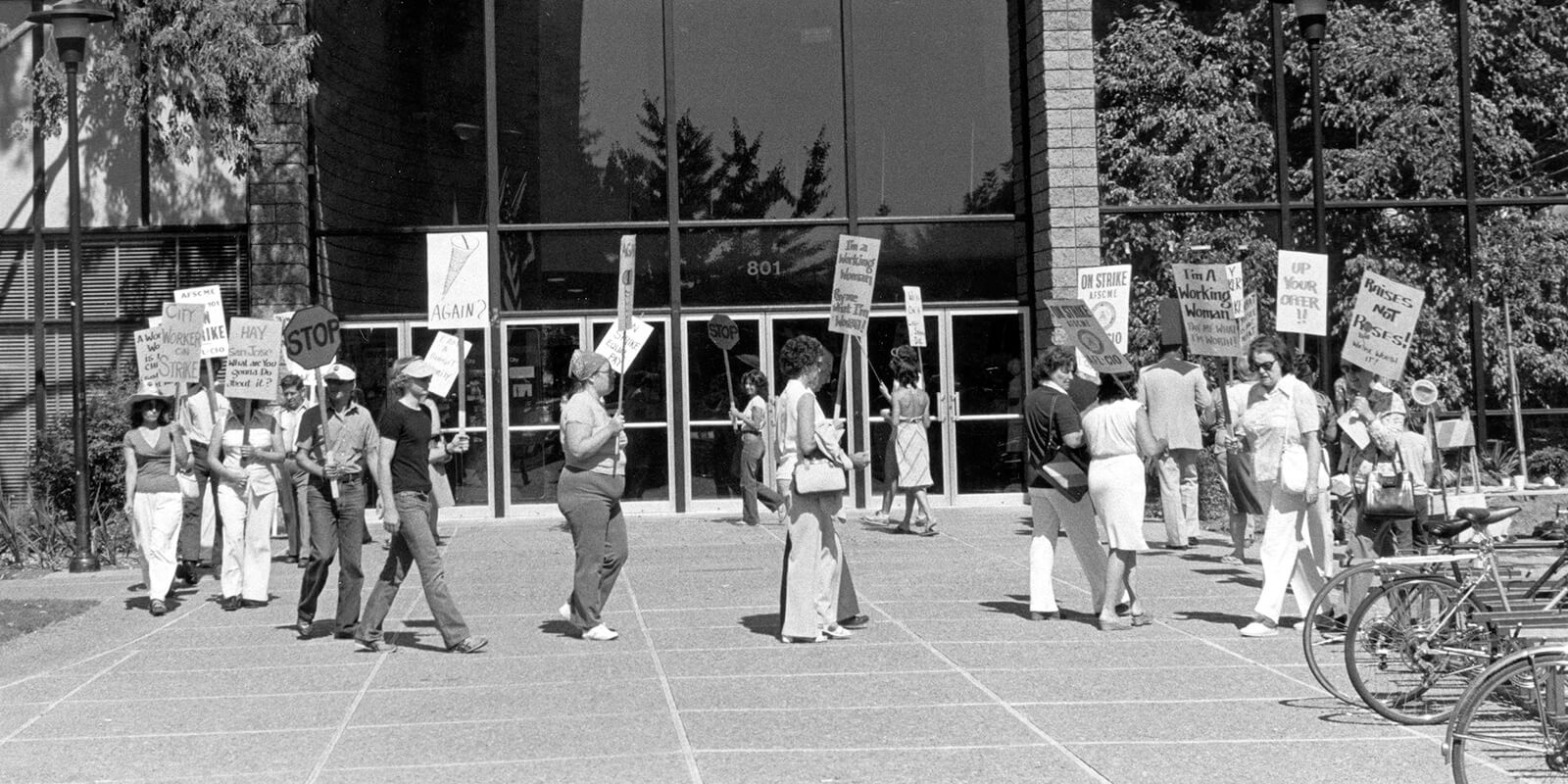In 1980, the union negotiated an agreement with city management to conduct a study of the value and the pay levels of all municipal job categories. The city had conducted a similar study at the management level, resulting in closed pay gaps. Workers had high hopes that the city would follow suit for non-management workers, but management objected. While agreeing that the job segregation existed, and that women were clustered in the lower paying jobs, they refused at first to do anything about it. Management even insisted that the cost of closing those gaps would have to come out of cost-of-living increases for all workers.
Union members said “hell no” to that. Workers walked off the job on July 5, 1981, the day after the previous agreement expired.
They walked the picket line for 10 days. They remained strong even when management sent letters to all bargaining unit employees threatening to fire them if they did not return to work. In fact, they turned that management tactic on its head by setting up a barbecue grill in front of City Hall and burning their letters at a huge rally. As Goddard put it, “The moose stands firm, and he does not give in. So, our union mascot became the moose.”
On July 14, they settled the strike, winning cost-of-living increases for all employees and a separate pool of money for pay equity adjustments for employees in female-dominated job classes. Over the next five years, $1.75 million was spent to close the gaps. Workers delivered a massive victory for employees in the bargaining unit, for pay equity and for union power. According to the president of the Municipal Employees Federation at that time, more than 500 city workers – women and men – became new members during the campaign.
It’s worth remembering this strike as we celebrate its 40th anniversary. It fanned the flames of other pay equity campaigns led by AFSCME locals and councils across the country, from Washington state to Minnesota to Connecticut. It positioned AFSCME as a leader on the issue of pay equity for women and people of color – a fight we are still waging. It is part of the history of our union’s growth, especially among women in public service. And it reminds us of the power of collective action, then and now. Another leader in the fight, Patt Curia, said it best when she talked about the strike victory: “That’s why you need a strong union.”
